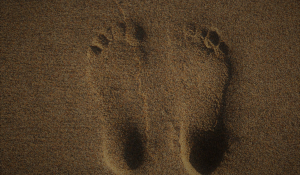Textile Industry: Environmental Impact and Regulations
Table of content
1. Anti-Waste for a circular Economy Law (AGEC)
2. The Eu Strategy for Sustainable and Circular Textiles
3. The Climate and Resilience Law and the “textile eco-score”
4. Bill Aiming to Reduce the Environmental Impact of "Fast Fashion"
5. How ClimateSeed can help companies from the textile industry?
With 4 billion tons of CO2 emitted annually, accounting for 10% of global greenhouse gas emissions, the textile industry is a major contributor to global warming. At the European level, clothing is the fourth most environmentally sensitive consumption category, preceded by food, housing, and transport. Indeed, the demand for clothing is increasing with unprecedented speed: from 62 million tonnes in 2015 to 102 million tonnes in 2030.
Despite this high demand, 80% of French consumers are willing to take into account the environmental impact of their purchases, but generally lack reliable information to act effectively. This helps explain the emergence of new European regulations in favor of sustainable and circular textiles.
The textile industry is subject to robust and growing regulation.
1. Anti-Waste for a Circular Economy Law (AGEC)
Effective January 1, 2022, the Act prohibits the destruction of unsold nonfood products. Companies will now have to reuse, donate or recycle their unsold products, rather than landfill or incinerate unsold goods.
Under Article 13 of the law, consumers are required to be informed of certain environmental characteristics of purchased products. As of January 1, 2023, all producers and importers whose annual turnover is greater than €50 million and who distribute more than 25,000 units per year, must communicate the following information on a dematerialized medium for a minimum period of two years:
- Geographical traceability of the 3 main manufacturing stages (weaving, dyeing, assembly/finishing);
- As well as, a warning concerning synthetic fabrics that reject micro-plastic fibers during washing.
From January 1st 2024, companies with annual turnover greater than €20m and distributing more than 10,000 units a year are required to comply.
As the AGEC law is being implemented in several phases, other measures will be introduced in the coming years, such as a system of eco-design bonuses or penalties based on environmental criteria.
2. The EU Strategy for Sustainable and Circular Textiles
Adopted on March 30, 2022, alongside a series of legislative proposals from the European Commission, this strategy proposes measures that target the entire life cycle of textile products by 2030. The measures envisaged include:
- A minimum of recycled fibers in the composition of fabrics to make them more resistant and easier to repair and recycle;
- Greater textile information and a digital product passport;
- Strict controls on greenwashing to protect consumers.
The strategy takes into account the key role of the consumer in achieving the ecological transition, as they will be entitled to compensation for infringement, once the law has been transposed into the national legislation of the Member States.
3. The Climate and Resilience Law and the “textile eco-score”
Originating from the work of the Citizens' Convention on Climate, the Climate and Resilience Law of August 24, 2021, provides for the creation of an environmental label for textile products.
Since October 1, 2025 (7), a new labeling system called the “textile eco-score” has been gradually rolled out online and in stores. Inspired by the Nutri-Score for food, it allows consumers to quickly and easily understand the environmental impact of a garment.
Objectives of the textile eco-score:
-
To inform consumers about the environmental cost of a garment (GHG emissions, biodiversity impacts, water and other natural resource consumption, durability, pollution);
-
To raise awareness of responsible consumption and encourage manufacturers to adopt eco-design practices.
Products concerned:
-
Underwear, shirts, trousers, jeans, shorts, skirts, dresses, swimwear, coats, and jackets.
-
Excluded: household textiles, single-use textiles, garments containing electronic components, or garments where more than 20% of the material’s mass is not included in the eco-score calculation methodology.
Format and display:
The textile eco-score can appear on the product itself, on the shelf, or on the brand’s website, as a visual indicating “impact points”: the higher the score, the greater the environmental impact.
4. Bill Aiming to Reduce the Environmental Impact of "Fast Fashion"
On June 10, 2025, the Senate unanimously adopted, with amendments and on first reading, a bill aimed at reducing the pollution caused by “fast fashion”.
As a reminder, fast fashion is defined as an "ultra" rapid production of cheap, low-quality clothing items with a very short lifespan. These practices have significant environmental, social, and economic impacts.
To address it, the bill aims to introduce several measures, such as:
- Requiring ultra fast fashion e-commerce companies to provide better consumer information about the social and environmental impact of their products, as well as the origin of manufacture;
- Reinforced penalties based on the polluter-pays principle;
- A ban on advertising through traditional media;
- A tax on small parcels (under 2 kg) being imported from abroad.
5. How ClimateSeed can help companies from the textile industry
In line with these regulations, it is necessary for companies to adopt a solid environmental approach. This starts with measuring your carbon footprint. At ClimateSeed, we have developed the ideal emissions monitoring tool, which facilitates the calculation of your carbon footprint whatever your sector.
The different missions we have conducted with textile companies have allowed us to build robust databases and to have a detailed understanding of the sector's value chain. Also, we provide the expertise and support necessary for textile companies to contribute positively to the fight against climate change by financing high-quality carbon removal and avoidance projects, carefully selected by our experts, and which generate carbon credits.
Contact us to start your approach.

Sources:
- vie-publique.fr. (2022, April 12). UE : quelle stratégie pour une industrie textile durable d'ici à 2030 ?
- Rapport du WWF sur l’industrie de l’habillement et des textiles. (s. d.). WWF Suisse.
- (Enquête Ipsos MORI réalisée avant la crise sanitaire, 2019).
- Mise en œuvre des lois « Anti-gaspillage pour une économie circulaire » et « Climat et Résilience » : plusieurs textes d’application importants ont été publies ces derniers jours. (s. d.). Ministères Écologie Énergie Territoires.
- Stratégie de l’Union européenne pour des textiles durables. (2022, 30 mars). Commission européenne. https://ec.europa.eu/info/law/better-regulation/have-your-say/initiatives/12822-Strategie-de-lUnion-europeenne-pour-des-textiles-durables_fr
-
Vêtements : ce qu’il faut savoir sur le nouvel éco-score textile https://www.economie.gouv.fr/particuliers/mes-droits-conso/bien-consommer/vetements-ce-quil-faut-savoir-sur-le-nouvel-eco-score-textile
-
https://librairie.ademe.fr/cadic/4367/lrdml_expo_affiche_a2_conception_version_def.pdf
- vie-publique.fr (2025, 10 juin). Proposition de loi visant à réduire l’impact environnemental de l’industrie textile. https://www.vie-publique.fr/loi/293332-proposition-de-loi-fast-fashion-impact-environnemental-mode-jetable
Share this
You May Also Like
These Related Stories

What is the Environmental Impact of the Food Industry?

Reducing Corporate Carbon Footprint: From Assessment to Action


